How To Compost At Home? Tips, Tricks, and How-To Guide
-
- Last updated:
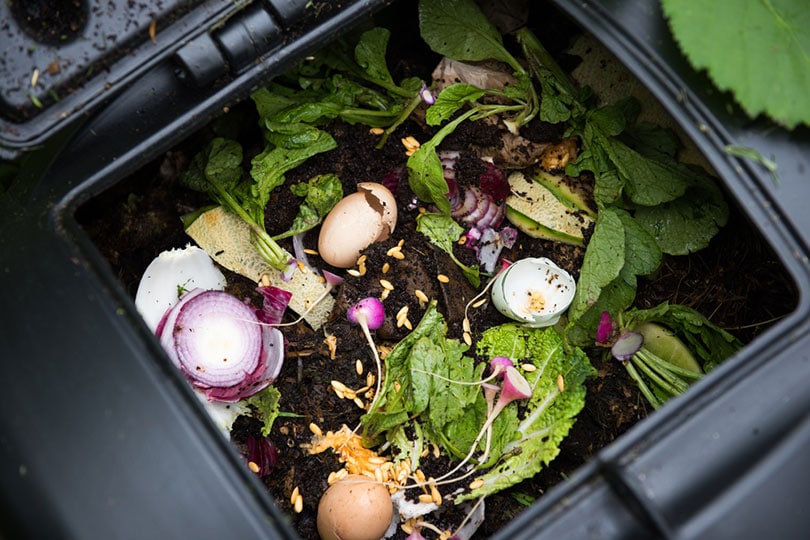
If you’ve researched composting—its benefits and its advantages for the environment—you are probably thinking of giving this fantastic method a try. Composting, in general, doesn’t require that much space.
In this article, we will help you make this desire a reality by teaching you all the tips and tricks of composting at home. It is pretty simple to do; for composting, you need only the organic waste produced from your household and a particular type of bin that will serve as a place for composting. Keep reading, as we will lay out all the basic things you will need to begin composting at home and different ways to do it.

What is Composting?
Composting is a method of using organic waste materials and turning them into fertilizer useful for enrichening soil and promoting the healthy growth of plants. Composting is a valuable hobby for many reasons—you will not throw out all of your organic household waste; instead, it will have a purpose. Using your compost pile as a fertilizer for your plants will ensure healthy soil that will produce more vegetables.
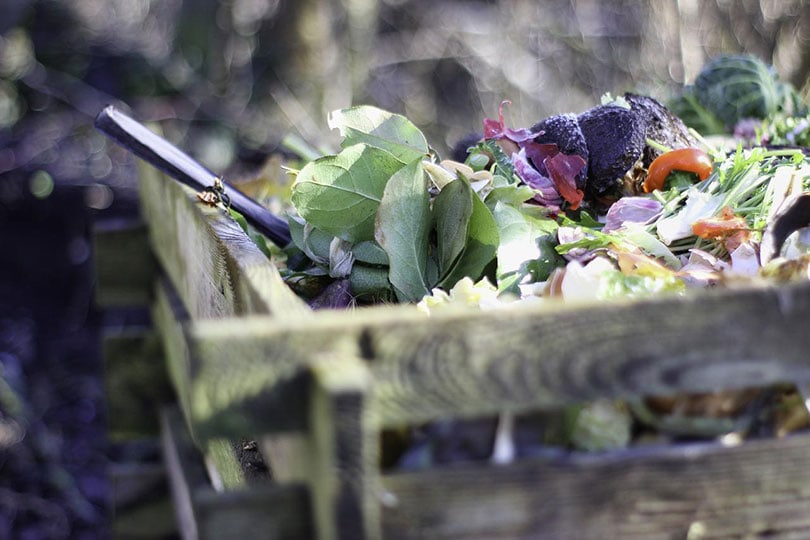
Benefits of composting
- Composting is friendly to the environment
- The soil that is fertilized by compost is filled with nutrients
- Reduces waste
- Lowers CO2 emission
- Food waste will turn into a healthy resource for your soil
- You can save money
What you can use to make compost

What you can’t use to make compost

How to Compost at Home (Step-By-Step Guide)
1. Choose a spot for the composting pile
The first step in this process would be choosing an ideal place for the composting pile. This place has to be shady and, most importantly, dry. In the beginning, you should place your compost material on the bare ground for organisms and worms to aerate the compost so that it could later sit in the compost bed.
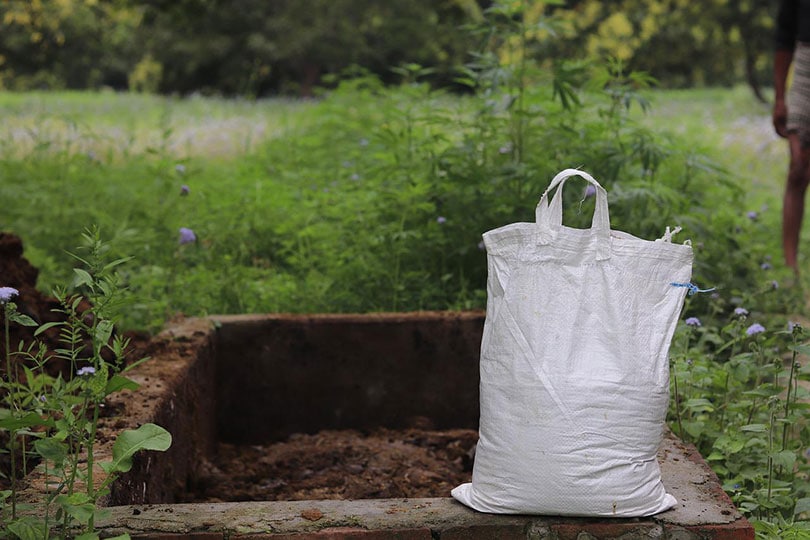
2. Layout the compost bed
For the first layer of the compost pile, you can put any brown or green materials. That means dry leaves, straw, sawdust, twigs, or other materials that will be neutral in the compost pile and collect moisture efficiently. This will also work well for drainage.
3. Start adding the compost material
Start adding materials to your new compost pile. Begin with the first layer. Add any of the waste products listed above, and cover them again with neutral, dry materials such as sawdust, straw, or dried leaves. These materials should alternate between dry and moist, so if you add your food scraps to the pile, sprinkle the dry ingredients in a very thin layer.
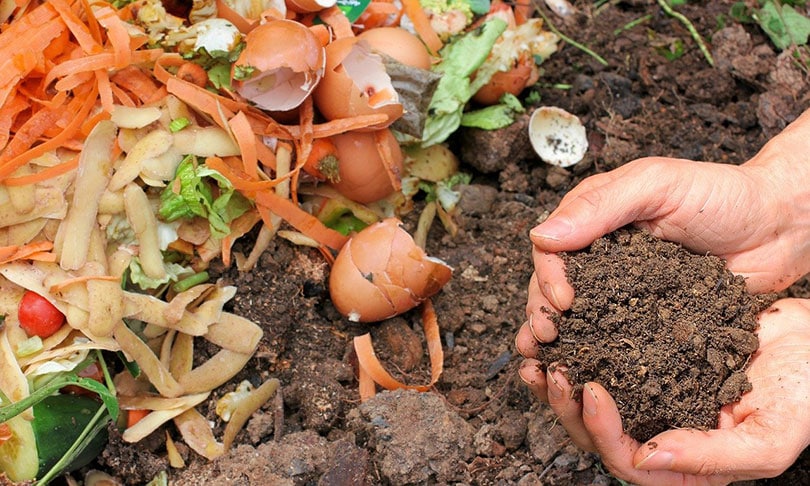
4. Cover the compost pile with a tarp
To keep your composting pile moist enough, cover it on the top with anything you can find. A plastic sheet, wooden plank, cloth, or anything similar will work.
5. Turn your compost pile regularly
Make sure to tumble your compost pile from time to time. This step is necessary to aerate the compost as much as possible and promote the creation of healthy aerobic bacteria, which will lead this process in the right direction. You can turn the pile with a pitchfork or a shovel, mixing all the already degraded materials and aerating the soil.
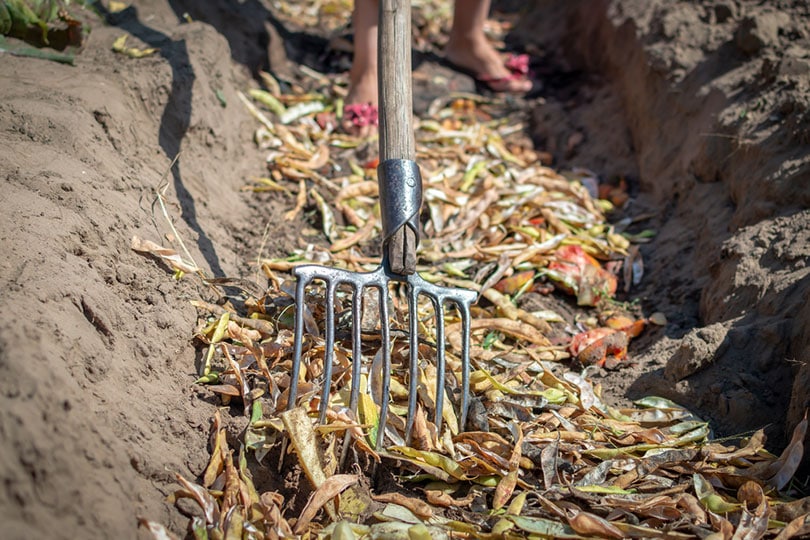
6. Use the composting pile
Your composting pile will take up to 2 years to be ready for use. It should sit longer and develop the right way, which is better than using it too soon and getting negative results. The compost pile will need heat to go through all the necessary processes. If there aren’t enough warmer days during that year, the pile might have to sit for another year.

Indoor Composting
To begin composting indoors, you will need a regular plastic bin. You can find a composting bin at almost any hardware store, and it comes in a variety of sizes depending on how much compost you want to make.
You can find any dark and dry space in your home to place your compost bin. You can place it in a basement, in a closet, or even under your kitchen cabinets. You don’t need a lot of room for indoor composting, which makes it great for many people confined to a smaller living space.
Methods of Indoor Composting
There are typically two methods for composting; aerobic composting and vermicomposting. Both ways are great for turning any organic waste into homemade organic fertilizer, and both are rich in nutrients like phosphorus, potassium, nitrogen, and others.
1. Aerobic composting
Aerobic composting uses garden soil and regular turning and exposure to air to make your kitchen waste or other organic material into compost. Later, you can use the degraded organic compost as a homemade fertilizer for plants.
2. Vermicomposting
This method requires worms and other microbes found in the soil to degrade organic waste into vermicompost. This method has a slight advantage over regular aerobic composting since it helps the soil retain more water and guards it against harmful pathogens that can lead your composting process in the wrong direction.
- See Also: How Much Does a Composting Toilet Cost?

Benefits of Indoor Composting
The most significant difference between indoor and outdoor composting is the temperature. The main advantage of indoor composting is controlling the temperature of your room. When you do outdoor composting, the weather and temperature during that year are crucial factors that you do not have control of. The compost pile has to be shielded from rain and direct sunlight but still has to reach high temperatures for compost to develop correctly.
Indoor composting is easy to regulate, no matter how small your home is, which is another benefit. Even if you live in a smaller space, you can always find a dark and dry room to place your composting bin.
Tips and Tricks for Indoor Composting
To save money, try crafting a compost bin yourself. You can do this with any type of five-gallon bucket. You can use old wine crates or even an old dresser drawer for this. It is best to cover it with some kind of cloth or another piece of wood cut to size.
You can keep a stash of dry leaves, straw, or sawdust at hand, so it is always ready to add smaller layers to your composting pile.
Make sure to turn your compost after a while and tumble it as often as possible. This will effectively aerate the pile, help speed up the process, and reduce the smell.
After collecting kitchen waste to add to your homemade composting pile, cut it down into small pieces. Objects that are smaller will break down much faster.
Tips and Tricks for Outdoor Composting
Try finding an outdoor space that will be ideal for the composting pile. It would be best to shield this place from direct sunlight and rain.
Use the old newspaper and regular printing paper on your compost pile. Paper will help keep the balance of good bacteria and moisture in your composting bin. Make sure to shred the paper before putting it in your pile because smaller items break down faster.
Another good tip for the soil in your compost is adding coffee grounds. Coffee grounds are full of nutrients that give your soil all the essential minerals such as calcium, potassium, iron, phosphorus, magnesium, nitrogen, and others.

Final Thoughts
Composting is a great way to use your kitchen waste and other organic waste to turn it into homemade fertilizer. You can use this fertilizer for fruit, vegetables, herbs, and any other plants growing in your garden. This method is eco-friendly and can be a rewarding hobby for plant lovers since you will craft your fertilizer and choose which items you will want to use.
Composting is great for experienced gardeners or even beginners. We discussed some tips and tricks on composting outdoors, but even if you do not have that much space, you can find suggestions on how to make compost from the inside of your home too.
Featured Image Credit: Ben_Kerckx, Pixabay
Contents

